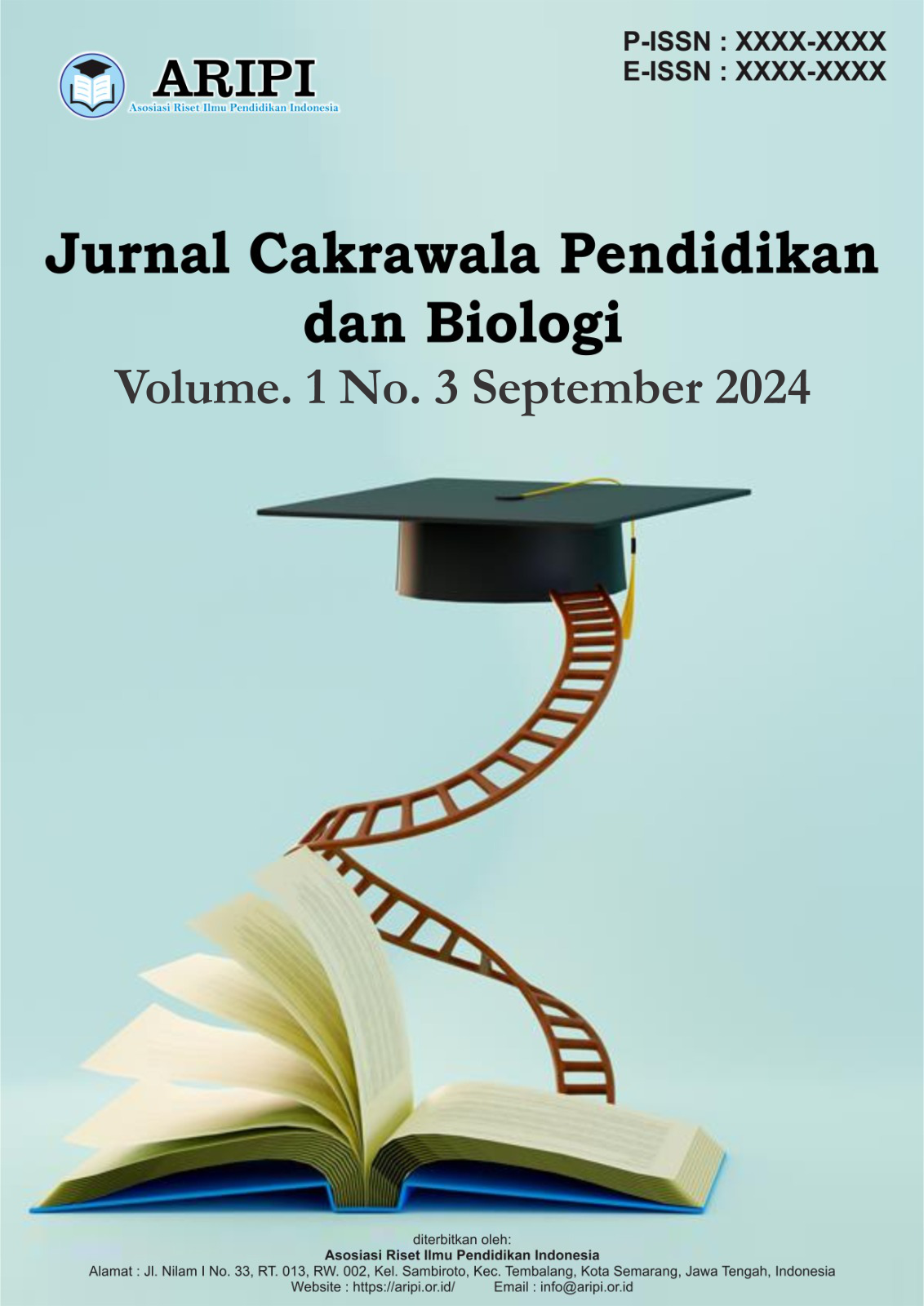The Influence of Digital Short Story Videos on English Learning Interests of Grade 10 Students at SMAN 4 Blitar
DOI:
https://doi.org/10.61132/jucapenbi.v1i4.38Keywords:
Learning interest, Listening Comprehension, Digital Short Story VideosAbstract
This study aims to explore the effect of digital short story videos on the interest in learning English of 10th grade students at SMAN 4 Blitar. Using a descriptive qualitative approach, data were collected through observation, questionnaires, and interviews with students and teachers. The results showed that internal factors such as health, motivation, and intelligence, as well as external factors such as family support and teaching quality, play an important role in increasing students' interest in learning. The use of digital short story videos was proven to be significant in increasing students' interest, with 91% of students stating that the videos were interesting. These findings suggest that digital media can be an effective tool in increasing engagement and learning outcomes.
References
Ahmad Rohani, H. M., & Ahmadi, A. (1991). Pengelolaan pengajaran. Rineka cipta.
Ainia, N. (2020). STUDENTSâ€TM INTEREST IN LEARNING ENGLISH OF ELEVENTH GRADE STUDENTS SMA NEGERI 1 SUKODADI. E-Link Journal, 7(2), 48–57.
Arsyad, A. (2019). Media Pembelajaran Edisi 21. PT RAJA GRAFINDO PERSADA.
Berkowitz, R., Moore, H., Astor, R. A., & Benbenishty, R. (2017). A research synthesis of the associations between socioeconomic background, inequality, school climate, and academic achievement. Review of Educational Research, 87(2), 425–469.
Birinci, F. G., & Saricoban, A. (2021). The effectiveness of visual materials in teaching vocabulary to deaf students of EFL. Journal of Language and Linguistic Studies, 17(1), 628–645.
Cakir, I. (2006). The use of video as an audio-visual material in foreign language teaching classroom. Turkish Online Journal of Educational Technology-TOJET, 5(4), 67–72.
Celce-Murcia, M., & McIntosh, L. (1991). Teaching English as a second or foreign language.
Chan, S., Bax, S., & Weir, C. (2017). Researching participants taking IELTS Academic Writing Task 2 (AWT2) in paper mode and in computer mode in terms of score equivalence, cognitive validity and other factors.
Chang, Y.-C., & Tsai, Y.-T. (2022). The effect of university students’ emotional intelligence, learning motivation and self-efficacy on their academic achievement—Online English courses. Frontiers in Psychology, 13, 818929.
Children’s Resources on Wheel. (2014). Parent Handbook. Children’s Resources on Wheel. www.crowlanark.com
Crystal, D. (2003). English as a global language. Cambridge university press.
de Moura Buzin, K. dos S., & Favoreto, A. (2022). John Dewey: interesse e esforço em debate. Acta Scientiarum. Education, 44.
Djaali, H. (2015). Psikologi Pendidikan (Tarmizi, ed.). Jakarta: PT Bumi Aksara.
Earl, L., & Katz, S. (2002). Leading schools in a data-rich world. In Second international handbook of educational leadership and administration (pp. 1003–1022). Springer.
Gardner, H. (1993). Multiple intelligences: The theory in practice. Basic Book.
Kharaghani, N. (2013). The effect of short stories on reading comprehension ability of Iranian EFL learners. Proceeding of the Global Summit on Education, 856–874.
Mangal, S. K. (2007). Essentials of educational psychology. PHI Learning Pvt. Ltd.
Miles, M. B., & Huberman, A. M. (1994). Qualitative data analysis: An expanded sourcebook. sage.
Moleong, L. J. (2017). Metode Penelitian Kualitatif, cetakan ke-36, Bandung: PT. Remaja Rosdakarya Offset, 6.
Rahmawati, N. M. (2020). The Implementation of Short Story in Enhancing Student’s Vocabularies. Wanastra: Jurnal Bahasa Dan Sastra, 12(2), 236–241.
Roby, T. (2010). Opus in the classroom: Striking CoRDS with content-related digital storytelling. Contemporary Issues in Technology and Teacher Education, 10(1), 133–144.
Rost, M. (2013). Teaching and researching: Listening. Routledge.
Sand, L. (1956). Audio Visual Teaching Procedures. New York: The Ronald Press.
Sardiman, A. M. (2019). Interaksi dan motivasi belajar mengajar.
Schiefele, U. (1991). Interest, learning, and motivation. Educational Psychologist, 26(3–4), 299–323.
Sherman, J. (2003). Using authentic video in the language classroom. Cambridge University Press.
Siswanto, W. (2008). Pengantar teori sastra. Grasindo.
Slameto. (1988). Belajar dan Faktor-faktor yang Mempengaruhinya. Bina Aksara.
Smith, P. A. (2002). Thematic guide to popular short stories. Bloomsbury Publishing USA.
Sugiyono. (2019). Metode Penelitian Kuantitatif, Kualitatif, Dan R&D (27th ed.). Alfabeta.
Sumantri, M., & Permana, J. (2001). Strategi Belajar Mengajar, Bandung: CV Maulana. Jakarta: Bina Aksara.
Wigfield, A., & Eccles, J. S. (1992). The development of achievement task values: A theoretical analysis. Developmental Review, 12(3), 265–310.






